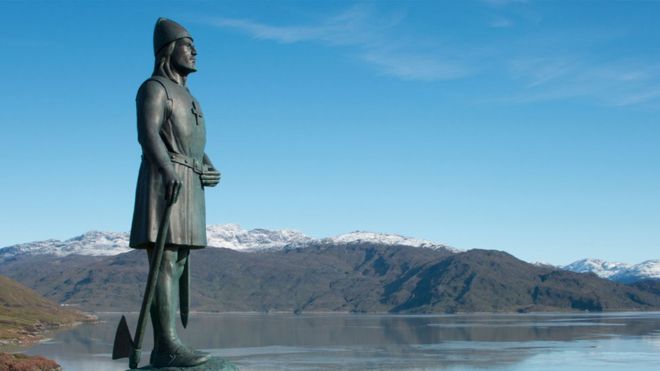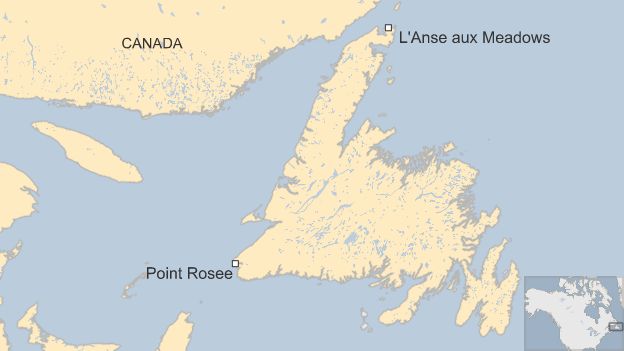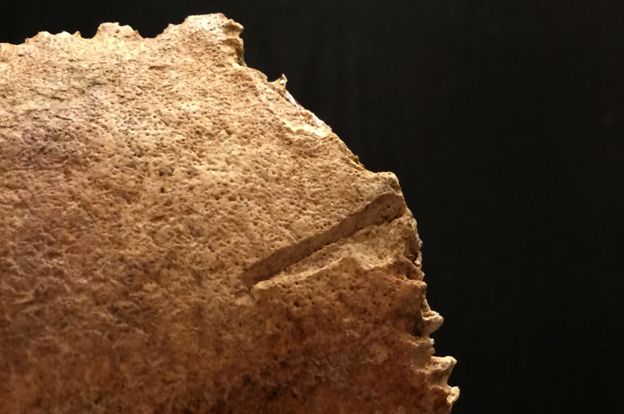A new discovery has revealed that the Vikings may have travelled hundreds of miles further into North America than previously thought. It's well known that they reached the tip of the continent more than 1,000 years ago, but the full extent of their exploration has remained a mystery, writes historian Dan Snow.

After a long hike across boggy ground and through thick pine forests, clutching pepper spray to protect against bear attacks, Sarah Parcak and her small team of archaeologists stood on an exposed, wind-blasted headland in North America.
Exhausted but happy, they had been led to Point Rosee in Newfoundland by the most high-tech weaponry in the modern archaeological arsenal - satellite data captured 383 miles (600km) above the Earth. But once here they were back to using trowels and brushes. I joined them to see how this powerful combination of new and old allowed them to make what could be a seismic discovery.

In about 800AD Britain felt the fury of these men from the north. Portmahomack was one of Scotland's most prosperous and important communities. On a protected bay in Easter Ross, on the edge of the Highlands, it was well placed as a waypoint for merchants, travellers and pilgrims moving along the east coast.
Recent excavations have given us a picture of a wealthy monastery at its heart. Scriptures were copied on to carefully prepared animal skin parchment by monks, skilled craftsmen created beautiful, jewel-encrusted religious ornaments, sculptors carved intricate Celtic crosses. Trade was the source of these riches, the sea brought wealth, but the sea also brought destruction.
Archaeologists have revealed that Portmahomack was suddenly and utterly destroyed. They found smashed fragments of sculptures mingled with the ashes of torched buildings. The settlement was wiped out. It is impossible to be certain but historians now think the most likely explanation is that it was attacked and looted. When I visited, a couple of months before the trip to Point Rosee, I held a piece of skull in my hand, presumably from a monk.

It had been shattered by a mighty blow, the sword's blade left a deep gouge that makes the cause of death clear. Who were these men who slaughtered God's servants and annihilated one of the oldest Christian sites in Britain? Almost certainly they were men who cared nothing for the Christian God, men who came in ships from the north and west, men who sought gold: Vikings.
From BBC News
No comments :
Post a Comment
comentários